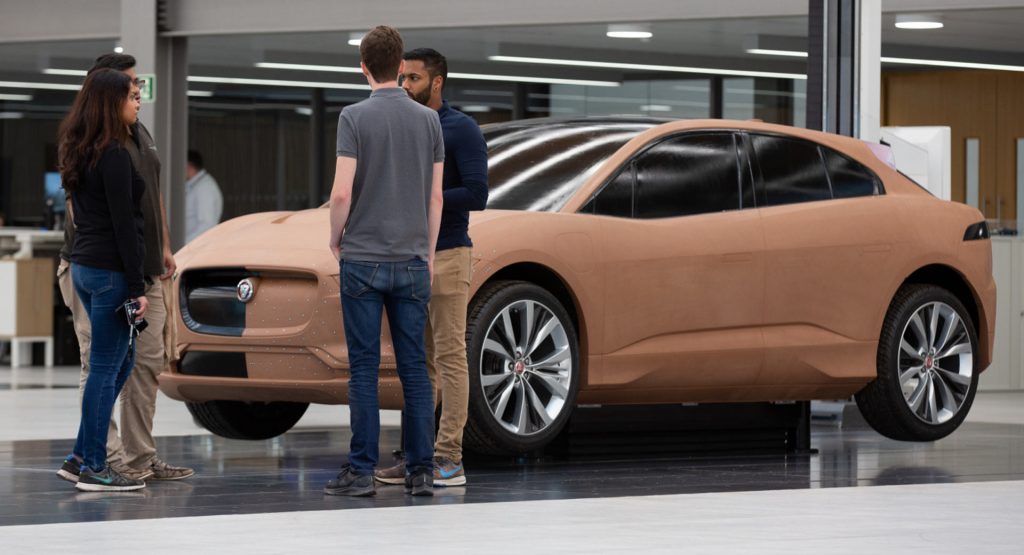Creating an eye-catching automobile isn’t an easy task, but Jaguar Land Rover has provided a glimpse at the process to mark the unveiling of their new design studio in England.
About four years before a new vehicle is unveiled, the company holds an internal competition which pits designers against one another. As the company explained, designers are “tasked with producing their best sketches and creative ideas” for the upcoming model.
The best sketches are then selected and further refined by computer-aided surfacing specialists who create a digital version of the initial design. As part of this process, “one design is selected as the ‘vision’ which is used by the design and engineering teams to outline the feasibility of the proposal, its planned dimensions, aerodynamic requirements and any regulatory conditions.”
From there, the design starts to come to life as the second step is the construction of clay models. This happens relatively quickly as Jaguar said the new design studio will enable them to go from to a sketch to a full-size clay model in only two weeks.
The company employees 46 sculptors and they carefully transfer the digital design into the real world. As part of this process, four sculptors work on a half-scale clay model and each is tasked with focusing on one side of the car.
Following the completion of the six to eight half-scale clay models, the company holds a review process which selects the best design. It will be further refined and transformed into a full-size clay model.
Also Read: Jaguar Unveils Full-Size I-Pace Clay Model For Museum Exhibit
This process is more involved as the full-size clay model features a foam core, an aluminum chassis and up to 3.5 inches (90 mm) of clay. The model is also equipped with real wheels and this enables to it be moved outside where its design can be seen in natural light. This process is time consuming as Jaguar noted the “revisions and adjustments [are] made over the course of several months as each element of the design is refined and finessed to achieve a cohesive and elegant outcome.”
While this is going on, teams are working on other aspects of the vehicle. In particular, the digitalization team works on 3D digital models which can be explored in virtual and augmented reality. This helps the company explore a wide variety of designs and even interior details such as headliners and infotainment screen start-up sequences.
Speaking of the interior, the Color and Materials team focuses on items to install in the vehicle. As part of this effort, they examine trends and extensively test potential materials for use in the car. In particular, seat upholstery is subjected to 60,000 cycles of the Martindale rub test which simulates the natural wear of the seats after years of use.
The team also helps to develop new exterior colors, a process that takes approximately four years. That’s a long time, but it involves a number of different tests including exposure to high humidity and temperatures of -4° F (-20° C). Samples are also subjected to stone chip testing and two years of exposure in Florida.
Eventually, the company creates a so-called “Customer Design Reference Model” which is used to showcase what the final vehicle will be like. It’s built on a bespoke chassis and features a carbon fiber / fiber glass body as well as working lighting units and one-off wheels. The model can also be driven at low speeds and features a fully trimmed interior with working displays.






















